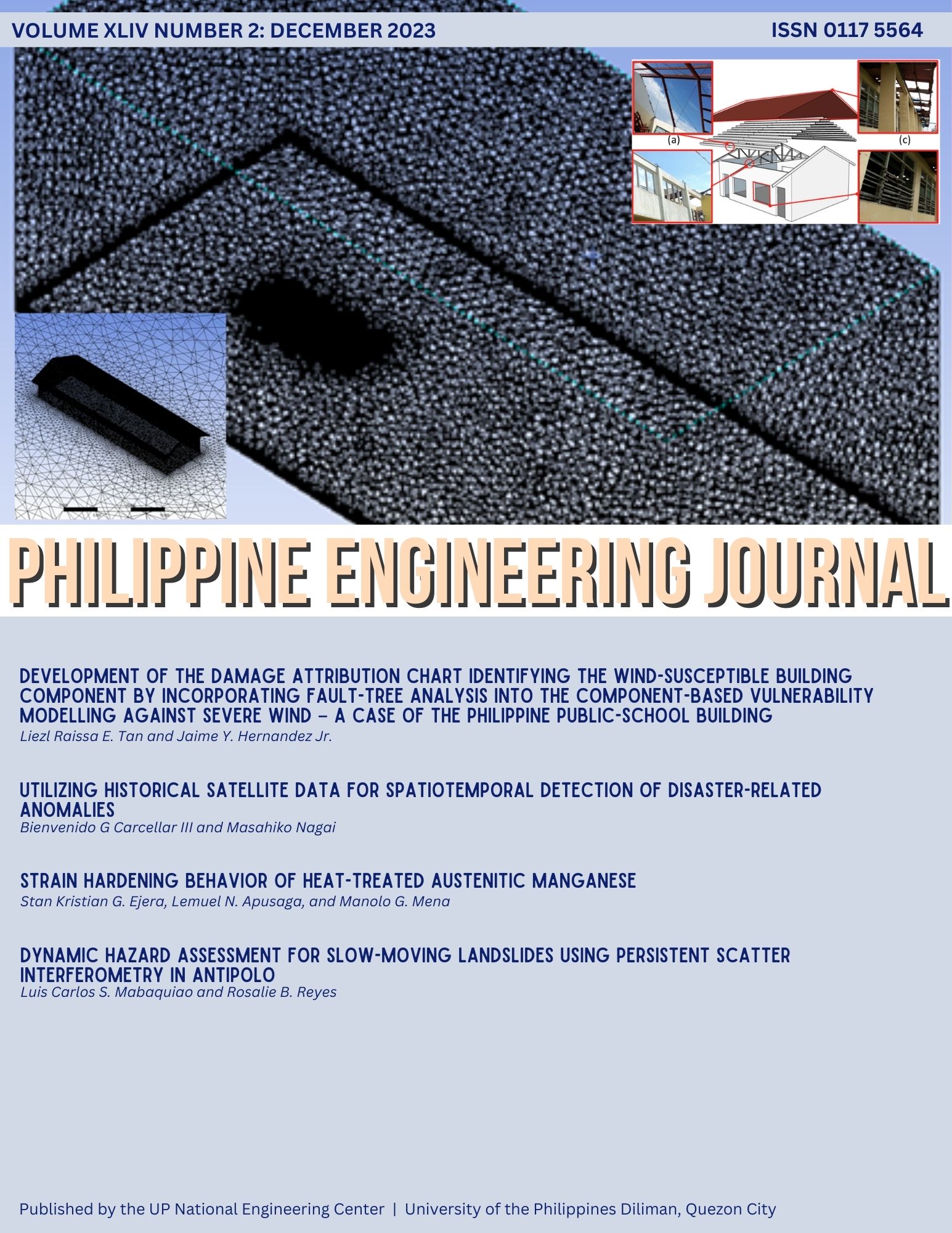Strain Hardening Behavior of Heat-Treated Austenitic Manganese
Abstract
Abstract – Austenitic manganese steel (AMS), also known as Hadfield Steels, is a type of steel alloy known for its excellent toughness, ductility, wear resistance, and work-hardening capability. This study explores the strain-hardening behavior of AMS. The effects of both casting pouring temperature (1370, 1410 and 1450 °C) and microalloying (0.1% Ti and 0.06% Ce) were investigated. The samples were melted in an induction furnace, sand-cast at varying pouring temperatures, and then heat treated at 1090°C for 2 hours. The heat-treated samples were then subjected to tensile testing — raw data of which were used in mathematical analysis to find the strain hardening exponents (n1 and n2), instantaneous strain hardening exponent (n*), and strain hardening rate (dσ/dε). Results show that coarser grain sizes resulted in higher n-values with sharp transitions from the plastic to the brittle state. Conversely, finer grain sizes resulted in smaller n-values with a gradual decline in their formability/plasticity as opposed to the sudden drop observed in courser grains. The introduction of alloying elements lowers the n-value due to their secondary strengthening effects (e.g. 2nd phase and solid solution strengthening) and may offset any positive grain size effect on the alloy’s formability in the low to intermediate strain range. These secondary effects, however, are less prominent at advanced strain levels. Lastly, larger grain sizes and possibly secondary strengthening effects markedly increase the calculated strain hardening rate over the plastic region.
Keywords: Austenitic Manganese Steel; Hadfield Steel; Pouring Temperature; Strain Hardening


